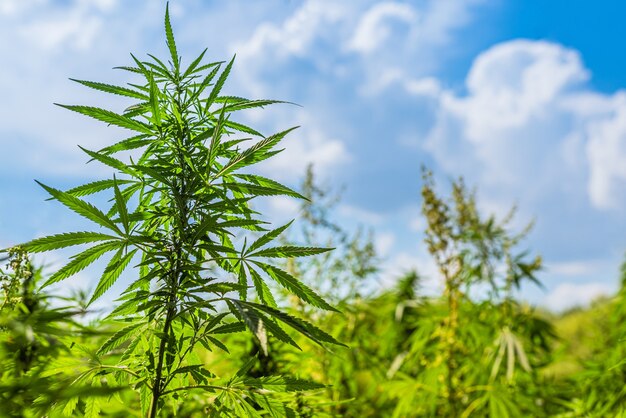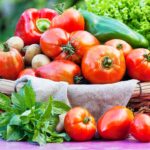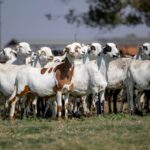Hemp cultivation is gaining popularity among South African farmers due to its versatility and economic potential. With the demand for hemp-derived products such as textiles, paper, building materials, and CBD oil on the rise, growing hemp can offer a lucrative opportunity. However, like any crop, hemp requires careful planning, management, and understanding of its growth cycle. This article provides a detailed guide for South African farmers on how to grow hemp from seed to harvest, addressing everything from soil preparation to pest management, and storage.
1. Land Preparation for Hemp Cultivation
Before planting hemp, farmers must ensure the land is well-prepared to support the crop throughout its growth cycle.
- Soil Type: Hemp thrives in well-drained loamy soil with good organic content. Sandy or clay-heavy soils should be avoided unless amended with organic matter. The ideal pH for hemp is between 6.0 and 7.5.
- Soil Testing: Conduct a soil test before planting to determine nutrient levels and pH. This allows farmers to make necessary amendments with fertilizers or lime.
- Tillage: Light tilling may be required to break up compacted soil and ensure proper root penetration. However, minimal tillage is encouraged to protect soil structure and reduce erosion.
2. Seed Selection and Sowing
The success of your hemp crop begins with selecting the right seed variety. Hemp is cultivated for different purposes—fiber, seed, or CBD production—so it’s important to choose the right variety based on your goals.
- Seed Varieties: There are different hemp varieties for industrial fiber, grain, and CBD oil. Fiber hemp varieties grow tall and are ideal for textiles, while seed hemp is shorter. CBD hemp requires varieties with high cannabidiol content.
- Sowing: Plant hemp seeds directly into the soil when the soil temperature is above 10°C, usually between September and November, depending on the region.
- Planting Depth and Spacing: Sow seeds 2-3 cm deep. For fiber hemp, plant seeds densely (about 50-60 plants per square meter) to encourage tall growth. For CBD or seed hemp, space plants further apart (about 100 cm between rows and 20 cm between plants) to promote bushier growth.
- Germination: Hemp seeds typically germinate within 5-7 days, provided the soil is moist and temperatures are ideal.
3. Watering and Irrigation Requirements
Hemp requires moderate amounts of water, particularly in its early stages of growth.
- Water Requirements: Hemp needs about 500-700 mm of water per season. It is important to maintain consistent moisture, especially during germination and early vegetative growth, but hemp should not be waterlogged.
- Irrigation Frequency: Depending on rainfall, irrigation may be required every 3-5 days during dry spells. Drip irrigation or overhead sprinklers are recommended for efficient water use.
4. Fertilizers and Nutrient Management
Hemp is a nutrient-hungry crop, particularly during its early vegetative growth phase.
- Nutrient Needs: Hemp requires nitrogen (N), phosphorus (P), and potassium (K) in relatively high amounts, with nitrogen being the most important. Apply 70-120 kg of nitrogen, 30-50 kg of phosphorus, and 70-100 kg of potassium per hectare.
- Fertilization Schedule: Apply fertilizers before planting to enrich the soil. A side-dress of nitrogen may be applied in early vegetative stages (4-6 weeks after planting) to boost growth.
- Organic Fertilizers: Compost and well-rotted manure can also be used to improve soil structure and provide slow-release nutrients.
5. Growth Stages of Hemp
Hemp has distinct growth stages that require different management practices:
- Germination (1-2 weeks): Seeds sprout, and seedlings emerge from the soil. Keep the soil moist during this period.
- Vegetative Stage (4-6 weeks): Rapid growth occurs, with the plant focusing on stem and leaf development. Nitrogen is particularly important during this stage. Weeding and pest management are crucial to avoid competition.
- Flowering Stage (6-8 weeks): Plants begin to flower, especially for CBD or seed hemp. Nutrient needs shift to phosphorus and potassium to support flower development. Monitor closely for pests and diseases during this period.
- Maturation Stage (8-16 weeks): The plants slow down growth and prepare for harvest. CBD and seed hemp should be carefully monitored for harvest timing, as THC levels need to remain within legal limits.
6. Pest and Disease Management
Hemp is relatively resistant to many pests and diseases, but it is not immune.
- Common Pests: Aphids, spider mites, and cutworms are common pests that attack hemp. Regular monitoring and natural predators like ladybugs can help control infestations. In severe cases, organic insecticides like neem oil can be applied.
- Diseases: Fungal diseases like powdery mildew and root rot can affect hemp, especially in humid or poorly drained conditions. To prevent fungal diseases, ensure good air circulation, avoid overwatering, and use disease-resistant varieties.
- Pesticide Use: Since hemp is used for medicinal purposes (CBD) and food (seed), it is crucial to minimize pesticide use. When necessary, choose organic or low-toxicity pesticides. Always follow regulations on pesticide use to ensure compliance with organic standards and safety protocols.
7. Weed Management
Weeds can significantly reduce hemp yields by competing for nutrients, water, and light.
- Pre-Emergence Herbicides: Apply herbicides before planting to minimize weed pressure. Be sure to select herbicides approved for hemp in South Africa.
- Mechanical Weeding: Use mechanical weeders or hand tools to remove weeds between rows during the early growth stages. Dense planting for fiber hemp can naturally suppress weeds by shading them out.
- Cover Crops: Planting cover crops like clover between hemp rows can help suppress weeds and improve soil health.
8. Harvesting Hemp
The timing and method of hemp harvesting depend on the intended use of the crop.
- Fiber Hemp: Harvest when the plants are in full bloom, usually around 70-90 days after planting. Cut the stalks and allow them to dry in the field for 2-3 weeks, a process called retting, which loosens the fibers.
- Seed Hemp: Harvest when seeds are mature and brown, usually 100-120 days after planting. Thresh the seeds using a combine harvester.
- CBD Hemp: Harvest CBD hemp when the flowers are fully developed and trichomes (resin glands) are visible. The timing of CBD harvest is critical to ensure legal THC levels.
9. Post-Harvest Handling and Storage
Proper post-harvest handling is essential to maintaining the quality of hemp products.
- Drying: After harvest, hemp must be dried to reduce moisture content to about 8-10%. Drying should be done in a well-ventilated, shaded area. For fiber hemp, stalks are dried in the field after retting, while seed hemp should be dried in a controlled environment to prevent mold growth.
- Storage: Once dried, hemp should be stored in a cool, dry, and dark place. Seeds should be kept in airtight containers to prevent exposure to moisture and pests. For CBD hemp, flowers should be stored in temperature-controlled facilities to preserve cannabinoid potency.
Hemp is a versatile and promising crop for South African farmers, offering multiple income streams from fiber, seeds, and CBD production. However, successful hemp cultivation requires careful management of soil, water, nutrients, and pests. By following the principles of good agricultural practices—selecting the right seed variety, managing water efficiently, and staying on top of pest and disease management—farmers can unlock the full potential of this crop. With the right knowledge and techniques, hemp can become a sustainable and profitable addition to South Africa’s agricultural landscape.
Join 'Farmers Mag' WhatsApp Channel
Get the latest Farming news and tips delivered straight to your WhatsApp
CLICK HERE TO JOIN






